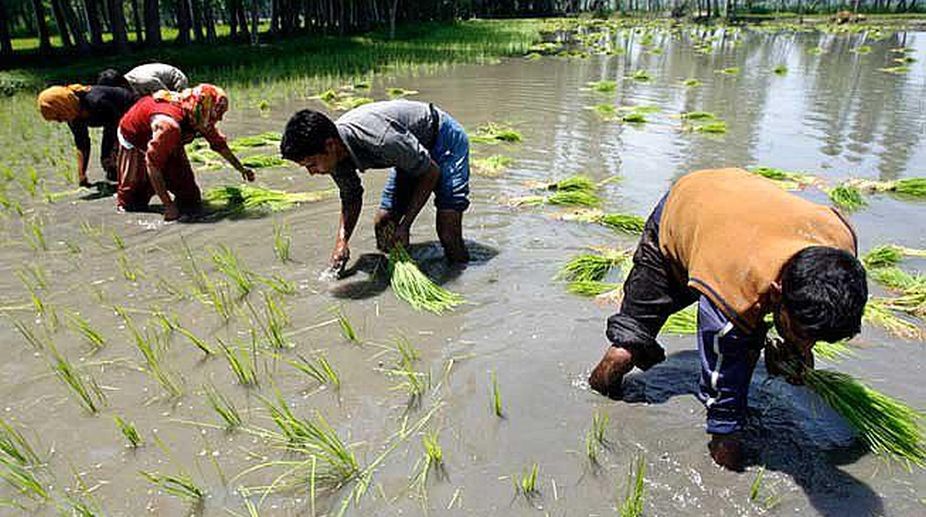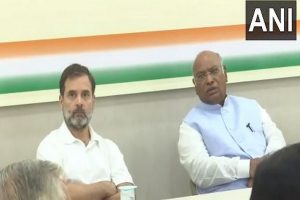It is so unfortunate that farming that is life-giving has now become life-taking. ~ Dr MS Swaminathan, the architect of India’s Green Revolution
The Indian economy is basically agrarian, and despite economic development and industrialisation, agriculture will continue to be the lifeline.
This sector contributes substantially to the country’s GDP, caters to food security, and is the source of livelihood for over 58.4 per cent of the population. According to the 2011 Agricultural Census, the number of farm workers in the country was 26.3 crore comprising 11.87 crore cultivators (45.1 per cent) and 14.43 crore agricultural labourers (54.9 per cent). The corresponding figures for 1951 were 9.72 (agricultural workers) and 6.99 crore cultivators.
The comparison indicates that there been an increase in the total number of workers. Further, relative to the total number of cultivators, the number of agricultural labourers has increased, fully bearing out Mahatma Gandhi’s observation that “India lives in villages and agriculture is the soul of the Indian economy.” Indian farmers once enjoyed a certain stature in society, but today they have been driven to penury. Death is a relief to many.
Farmlands are in ferment and farmers are up in arms in different parts of the country. It is a strange paradox that farmers, who work the hardest, receive subsidy on all key inputs and concessional interest rates, free water and power, minimum price support on their produce. And yet they don’t earn enough to make ends meet.
If crop production fails, they obviously have no money; even if production is satisfactory, crop prices tumble and they are bankrupt again. The Centre for Study of Developing Societies (CSDS) mentioned in its report ~ “State of Indian farmers” ~ that given an option the majority of farmers would prefer to take up some other work.
The Situation Assessment Survey of Agricultural Households, conducted in 2013, estimated the average monthly income of the Indian household at about Rs.6,426 taking into account the net receipts from cultivation, farming of animals, non-farm business and income from wages. The 2013 Survey also mentioned that against the average monthly income of Rs.6,246, the average monthly consumption expenditure was Rs.6,223. This reflects the vulnerability of the farmers in terms of inadequate income to meet family expenses and ensure savings that can be invested in the farm.
In the absence of savings coupled with the required quantum of institutional credit, farmers are compelled to borrow from moneylenders. According to the 2013 survey, about 52 per cent of the agricultural households were caught in a debt cycle ~ both in the formal (banking) and informal (money lenders’) market, and the average amount of outstanding loan per agricultural household was around Rs.47,000. Farmers are passing through a severe agrarian crisis ~ poor income, a bleak future and almost incurable stress.
The gap between aspirations and the lack of social and economic resources has compelled some farmers to commit suicide… as often as not by hanging themselves from trees that they had nurtured or by consuming pesticides they had sprayed to protect their crops in the fields.
On an average 10,000 to 12,000 farmers have been committing suicide every year. Many commit suicide even in the event of an abundant crop, leading to a crash in prices. According to the annual reports of National Crime Records Bureau (NCRB), Ministry of Home Affairs, GOI, indebtedness generally drives farmers to end their lives.
The local moneylenders are usually blamed, but the NCRB data underlines the fact that 2,474 of the 3,000 farmers, who were reported to have committed suicide in 2015, had availed of loans from banks; only 9.8 per cent of the total had accepted loans from moneylenders.
Populism is simplistic. India’s agriculture and farm sector policies have always been driven by electoral considerations, and not by the concept of sustained welfare of the farmer.
The season of competitive debt waivers has now set in with the Uttar Pradesh government’s announcement of a whopping Rs.36,359-crore farm debt waiver for small and marginal farmers. The voice of the farmer is becoming increasingly resonant. Debt-waiver is not simply an ethical issue; it has serious economic consequences. The immediate impact of this populist measure is the temporary fall in Non-Performing Assets (NPAs).
The debtwaivers that were announced by UPA-I just before the 2009 general election was a masterstroke; it resulted in a decline of NPAs from about three to two per cent. But NPAs steadily increased to the current six per cent as farmers were waiting for a similar concession despite a favourable crop.
Moreover, the loan-waiver did not lead to any material increase in the overall consumption levels of the beneficiaries. Rather, the farmers rightly anticipated difficult times ahead since such populist measures harm the honest credit culture. To improve the livelihood of the farmer and to check inflation, the government’s strategy entails persuading the farmer to move away from the traditional subsistence agriculture towards more commercial farming.
Farmers will have to invest a substantial amount. Since the credit culture gets hampered, traditional farm financiers do not provide the requisite volume of funds. Forcing farmers to fall back on moneylenders will impede diversification, thereby fuelling food inflation.
The RBI has observed, ‘The risk of fiscal slippages, which by and large entail inflationary spillovers, has risen with the recent announcements of large farm loan waivers.’ Indeed, populist measures can be disingenuous. The Government must consider alternate policy options that go beyond loan write-offs.
The immediate problem is the low prices of agricultural commodities, far below the minimum support prices (MSP) stipulated by the government every year and below the seasonal level for commodities that are not covered under MSP. As a shortterm solution, the government must ensure procurement at MSP/seasonal price, remove stockholding limits on private trade, sell what it cannot store to private traders at the market price, even if this results in a loss.
Farmers also need to be organised into large producer companies or co-operatives, to give them economies of scale and bargaining clout vis-à-vis their organised buyers, industry and the retail sector. Instead of placating the farmers with loan-waivers, it is important to invest in R&D, irrigation, construction of infrastructure, better weather forecasts, water storage, transport, warehouses, cold storages, processing of farm produce and a range of policies to make markets function for farmers by removing distortions.
Exports can improve rural incomes and also incentivise entrepreneurs to create storage and processing capacity in rural areas and thus generate employment opportunities.
As Prime Minister Narendra Modi has remarked: “There is nothing more important than a farmer’s life, a human being’s life. All of us have to reflect on where we have erred.”
(The writer is a retired IAS officer)












